"Here & There in Tokyo - December
2008" - Shinbashi, Yurakucho, Setagaya, & Shinjuku
- by Lyle (Hiroshi)
Saxon, Images Through Glass I was on my way to Yurakucho (via the Yamanote Line), when I heard music as the train was stopped at Shinbashi (one stop before Yurakucho), so when I looked out the window and noticed that there was a live band playing in the plaza, I jumped off the train in a hurry (before the doors closed), and went out to dive into the atmosphere there. Notice the steam locomotive; Shinbashi was the terminal station on Japan's first rail line, which ran from Yokohama to Tokyo, and so the steam locomotive is there to - I presume - commemorate Shinbashi's rail history. (Note: Shinbashi is sometimes written as "Shimbashi", but this is just wrong if you care about the correct pronunciation, as well as not bowing down to a defect in an otherwise good romanization system.)  After listening to a few songs in the SL-Plaza in front of Shinbashi Station, I walked over to Hibiya and Yurakucho, following the elevated tracks (Yamanote, Keihin-Tohoku, & Tokaido Lines, with the Shinkansen Super Express lines on the other side of the left and right views above). The oldest part of these elevated rail lines are brick, stone, and steel, with (recently) concrete reinforcements. What with Tokyo's relentless push to forever modernize (above and beyond the destruction the city experienced in WW-II), there is little old left in this city, and a nostalgia for old things has led to some interesting restaurants and drinking establishments under the brick arches of the overhead railway, such as the one in the right-side photo below (view from window at street lever, looking through a window, over a "roof", down on the cleverly recreated "street" within the restaurant/pub).  (Middle above) - The attraction of an older era is fashionable now, so they've nicely painted the underside of the overhead railway here where it forms a bridge between the brick supports, allowing a wide road to pass under the rails. Then they added new lighting and some plants. (Left below) - Under the Shinkansen supper-express tracks, which were added next to the old brick elevated railway in the early sixties (in time for the 1964 Tokyo Olympics). (Middle below) - A view of the elevated railbed between Shinbashi and Yurakucho. (Right below) - One of the restaurants in an arch below the overhead rails.  (Below, left, center, & right) - The ground that the Sanshin Building used to stand on. It's a bit depressing that that historical and interesting building was torn down, but at least it's good that they're doing something with the land - instead of just leaving it as an empty lot (while they await a neighboring lot to open up so they can build a huge glass & street monstrosity to cast a huge shadow on neighboring Hibiya Park), it's good there is something there in the meantime. (Middle below) - From looking at old newsreels, it seems that ice skating rinks used to be popular. This one is made of some sort of slippery plastic, which seems to work okay with both ice skates and roller blades. 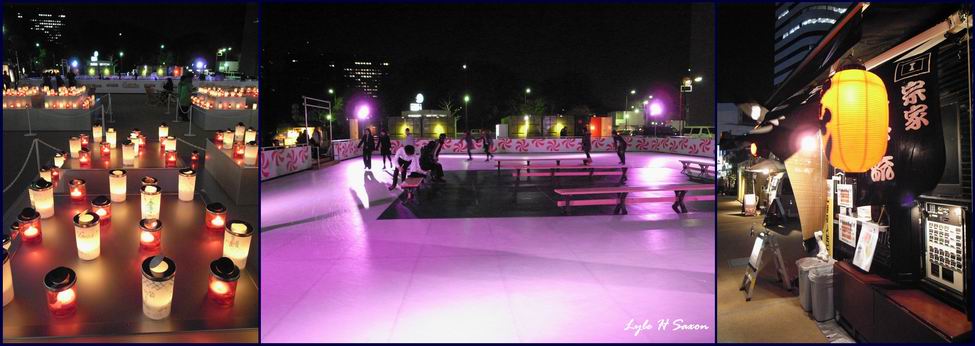 (Below left) - Near to and looking towards Yurakucho Station (the overhead train is at the station). (Below middle) - At a "stand bar" (a drinking place where there are no chairs or stools, so you stand to drink). (Below right) - Right on the boundary between autumn and winter, before the lowest temperatures of the year begin. 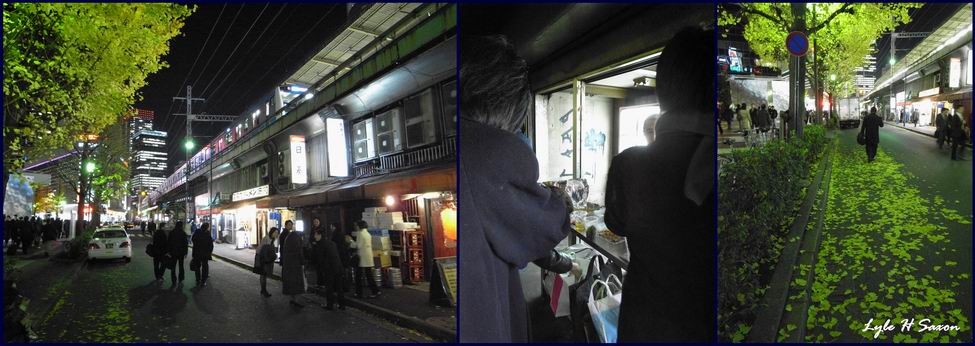 (Below left & center) - More views of the "stand bar". (Below right) - The hazard of staying out late on a Friday night (notice the clock) - lots of other people do too, and then the trains are really packed, and in contrast with the morning trains, you don't have the option of waiting for the next one. They run fewer trains at night, and they shut the entire system down between around 12:00 and 1:00 a.m., so typically, you'll find yourself on a very crowded platform, watching a very packed train arrive, and realize that you either get on that train, or don't go home until the morning trains. With that choice, you work very hard to get on the train!  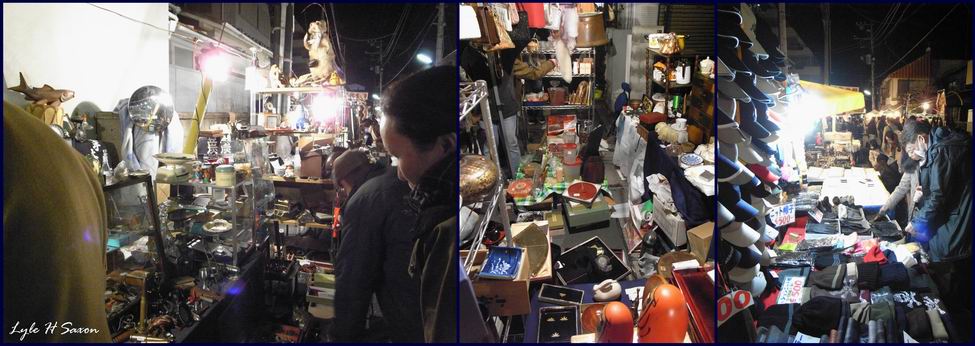 (Above & below) - Boroichi Market in Setagaya - held this winter on December 15th & 16th and January 15th & 16th. There are generally a lot of interesting used things for sale, but it's always so cold! 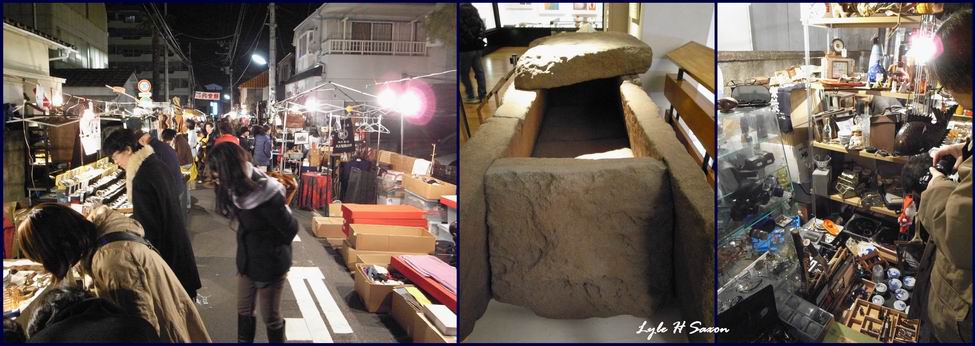 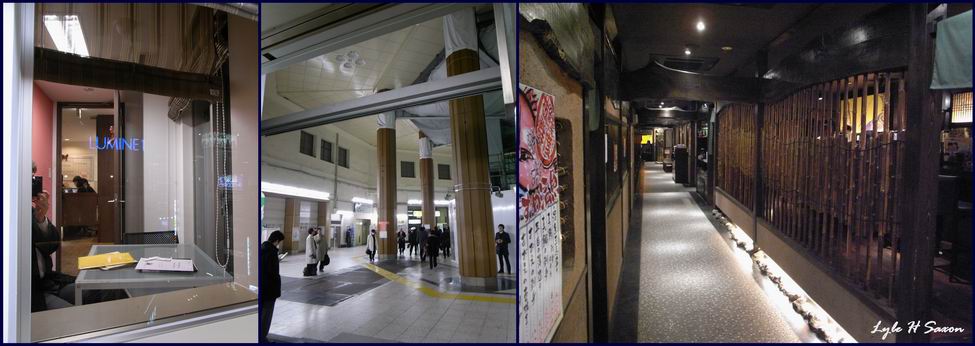 (Above middle) - Tokyo Station being renovated (fortunately they are preserving the historical old building). (Above right; below left and middle) - Going drinking after work. The old-looking wooden interior of the pub is inside a new-ish concrete building. (Bottom middle) - Just outside the pub, the cold streets of winter are always unwelcome after enjoying talking with people inside. (Below right) - Once upon a time, the stations were dark and underlit - now they are just about brighter than the noontime sun on a cloudless day. 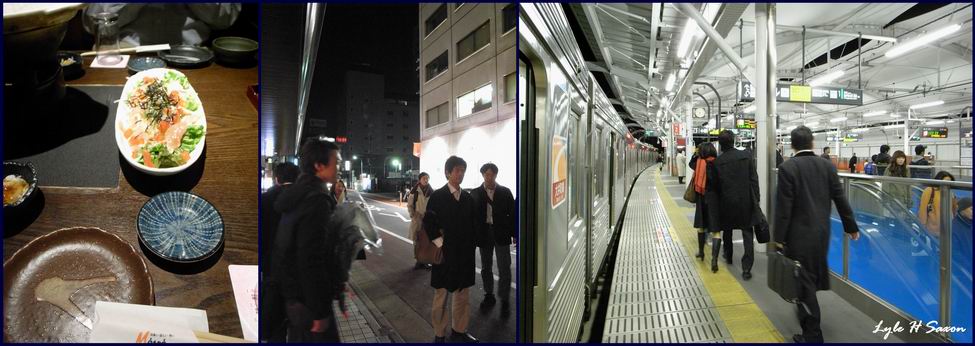 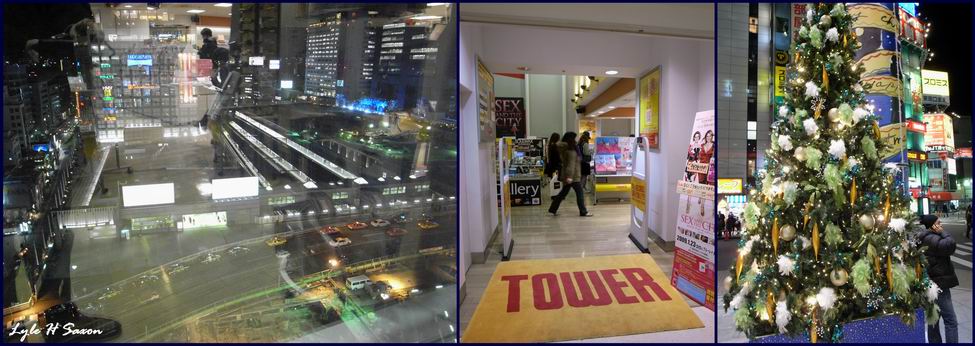 (Above and below) - Shinjuku. Tower Records began in Sacramento, California, where it went bankrupt and is now gone, but it lives on in Tokyo. (Below right) - One of the few remaining old type Chuo Line trains, which have nearly all been replaced with new trains over the past year. (Notice the square boxes on the roof of the train - those are roof vents - a nice feature where you can move a lever on the ceiling inside and get outside air. Unfortunately, the new Chuo Line trains don't have them.)  (Below left) - Out of sequence, this is back at the site of the former Sanshin Building. This type of restaurant-in-a-car/bus is not uncommon in Tokyo. Usually either conducted from a K-class local van, or - like in this photo - from an old VW van. (Below middle & right) - The venue for a kids' get-together in December. 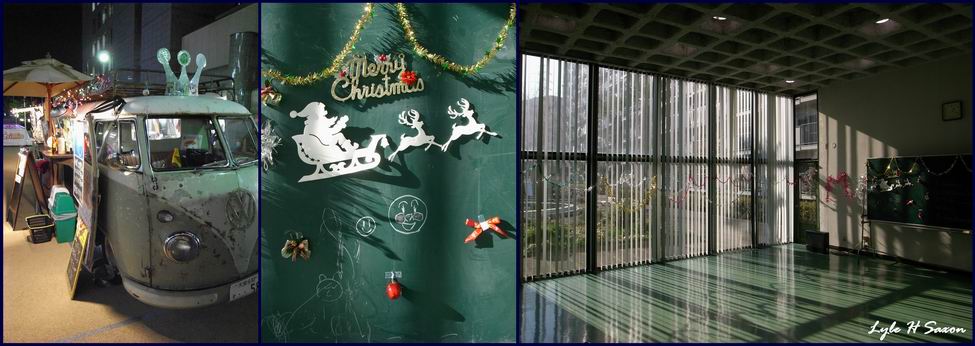 Copyright 2006 by Lyle (Hiroshi) Saxon, Images Through Glass, Tokyo - All rights reserved |